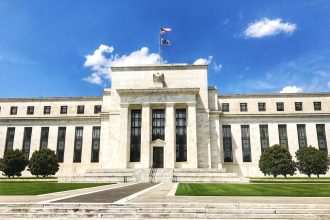In recent years, both banks and businesses have undergone significant transformations. These changes were bolstered by the world’s response to a global pandemic, shifting consumer behaviors and technological advancements. And while digitization has reshaped the way banks and consumers conduct transactions, physical establishments have not become obsolete. Instead, they have evolved to meet the needs of consumers while continuing to provide valuable services and experiences.
The adaptation of brick-and-mortar banks over the past few years, has been notable. Traditional bank branches faced a lot of headwinds and had to close, and the race to digitize the banking industry was on. However, it didn’t take long for many commercial and consumer banks to adopt a hybrid approach to meet both their customers and clients’ needs.
Commercial banks like my institution, ConnectOne Bank, benefit greatly from having physical locations in the communities that they serve. In today’s environment where branch closures are easing, spaces that once primarily handled banking transactions are transitioning into multifunctional hubs. Branches are becoming advisory centers, providing a boutique, personalized experience for business owners where they can meet with their banker or loan provider in a comfortable space. Somewhere that is local to them where they can receive the financial support and guidance they need.
Business owners are also finding value in banks that have meeting spaces they can use at their discretion. This further validates the brick-and-mortar banking trend toward branches as physical touchpoints for more complex interactions and consultations, with the additional ease of digitized transactions.
For example, a recent Wall Street Journal article highlighted that JPMorgan will be building 500 new Chase branches. “Leaders at the big banks believe branches remain the key ingredient to drawing in new consumer and small-business clients, even in an increasingly digital world,” the article said. And “ingredient” is a key word here. Banks have recognized the value of a hybrid strategy and are investing in innovative branch designs to create welcoming and community-centric spaces. Features such as meeting rooms, lounges, and interactive displays, the aim is to foster greater engagement with clients and deepen connections to the local community.
As businesses all over the United States learn to balance innovation and personalization, banks are adapting to ensure they meet the unique needs of those companies and their owners. Personalized service is crucial, and banks are prioritizing direct access to their teams and tailored solutions to meet individual needs. Despite the challenges posed by changing consumer behavior and digital transformation, the resilience and adaptability of both banks and businesses has been remarkable. By embracing change, investing in innovation, and prioritizing personal relationships, they have positioned themselves for long-term success in a rapidly evolving landscape.
Ultimately, while digital channels will undoubtedly play an increasingly important role in the way businesses and banks operate, the enduring value of physical establishments as community hubs and service centers cannot be overlooked. Looking ahead, the evolution of brick-and-mortar is likely to continue. It will be driven by ongoing societal shifts, generational habits and the ever-changing digital environment, but will ultimately always work to deliver on the needs of the consumer.
Read the full article here
















